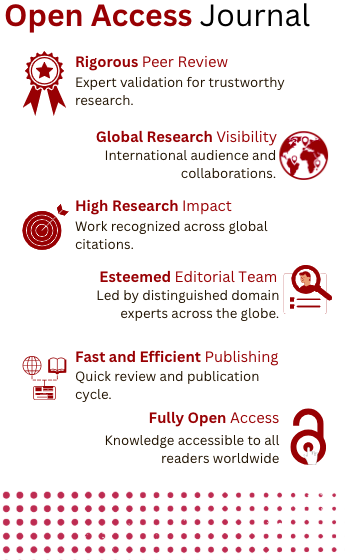Contrasting Virtual Reality and Augmented Reality in the Health Care System - Briefing
DOI:
https://doi.org/10.5281/zenodo.8068117Keywords:
Augmented reality, Virtual reality, HealthCareAbstract
Virtual reality (VR) technology has the ability to create a simulated environment that can be experienced through sensory stimuli such as sight, sound, and touch. VR has the potential to revolutionize various industries and fields, gaming and entertainment, Education and training, Healthcare, Architecture and design, Tourism and hospitality, Real estate, Sports. Overall, VR technology has the potential to enhance and transform many industries by providing new and innovative ways to interact with the world. Augmented reality (AR) is a technology that overlays digital information onto the real world, allowing users to experience and interact with digital content in a more immersive and interactive way. The role of AR is to enhance our perception of the physical world by adding contextual information, visualizations, and interactivity to it. AR has a wide range of potential applications, including entertainment, gaming, education, training, marketing, and more. It can also be used in healthcare for medical training, surgery planning, and patient education. Overall, AR has the potential to revolutionize the way we interact with digital content, making it more intuitive, engaging, and personalizedReferences
Perales, F. J., & López, G. (2020). Augmented reality and virtual reality in healthcare: a bibliometric analysis. Scientific Programming, 2020. doi: 10.1155/2020/9027157
Lee, J. Y., Cho, J., & Kang, H. (2021). Applications of Virtual Reality and Augmented Reality in Healthcare. Healthc Inform Res, 27(2), 82-93. doi: 10.4258/hir.2021.27.2.82
Rizzo, A. S., Koenig, S. T., & Parsons, T. D. (2017). Virtual reality applications for the assessment and treatment of PTSD. In PTSD (pp. 435-458). Academic Press.
Al-Shammari, N. K., Syed, T. H., & Syed, M. B. (2021). An Edge–IoT framework and prototype based on blockchain for smart healthcare applications. Engineering, Technology & Applied Science Research, 11(4), 7326-7331.
Ahmed, S. T., Singh, D. K., Basha, S. M., Abouel Nasr, E., Kamrani, A. K., & Aboudaif, M. K. (2021). Neural network based mental depression identification and sentiments classification technique from speech signals: A COVID-19 Focused Pandemic Study. Frontiers in public health, 9, 781827.
Lee, J. Y., Kim, J., Park, J. Y., & Park, J. B. (2019). Current status of augmented reality in surgery: An up-to-date review. Archives of Plastic Surgery, 46(6), 506-517.
Kumar, A., Satheesha, T. Y., Salvador, B. B. L., Mithileysh, S., & Ahmed, S. T. (2023). Augmented Intelligence enabled Deep Neural Networking (AuDNN) Framework for Skin Cancer Classification and Prediction Using Multi-Dimensional datasets on Industrial IoT Standards. Microprocessors and Microsystems, 104755.
Azuma, R. T. (1997). A survey of augmented reality. Presence: Teleoperators and Virtual Environments, 6(4), 355-385.
Downloads
Published
How to Cite
Issue
Section
License
Copyright (c) 2023 P Thej Kumar, J Sheik Mohamed, R Padmaja

This work is licensed under a Creative Commons Attribution-NonCommercial-NoDerivatives 4.0 International License.







